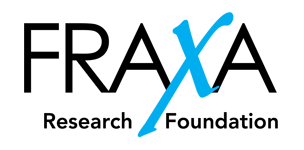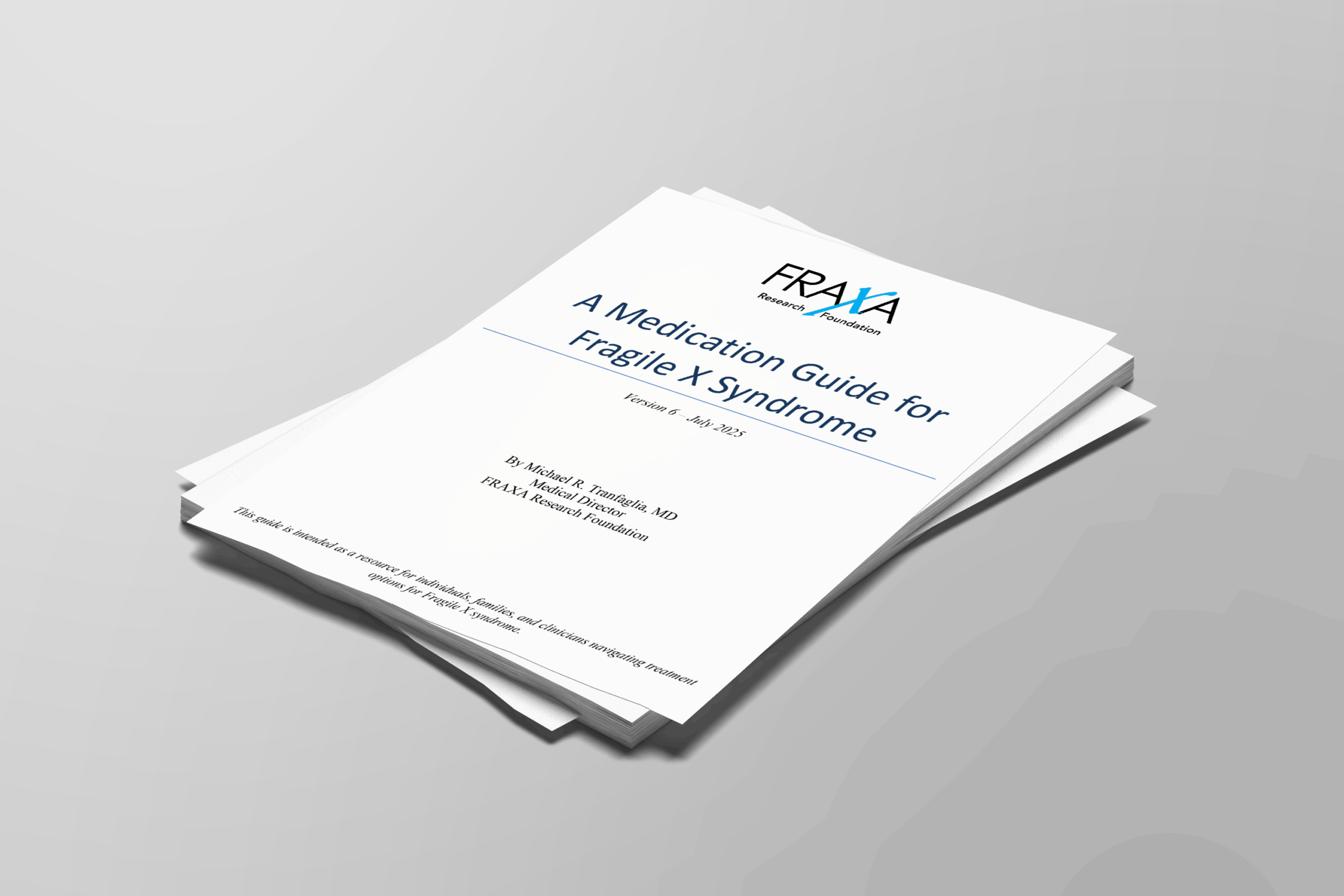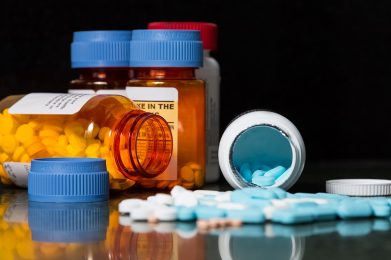Medication Guide for Fragile X Syndrome
A Gift to the Fragile X Community
This Medication Guide for Fragile X Syndrome (Version 6, 2025) is offered as a gift to the community. It was created to support families and caregivers as they navigate treatment options for the behavioral and psychiatric symptoms of Fragile X syndrome.
While each person with Fragile X is unique, many experience symptoms such as anxiety, hyperactivity, impulsivity, mood changes, and social difficulties. Medications can be an important part of managing these challenges, but finding the right treatment can be difficult, especially when healthcare providers are not familiar with Fragile X.
This updated medication guide helps bridge that gap. It offers clear, parent-friendly information about medications commonly used in Fragile X syndrome, including how they may help and what to consider. Whether you are exploring medication for the first time or want to better understand current options, this Fragile X medication guide is here to support informed decisions and stronger collaboration with your care team.
Disclaimer
This guide is not a medical textbook and cannot take the place of a qualified physician.
It is intended to serve as background information to help parents, caretakers and others communicate with their physicians regarding medications. The medications described in this guide are to be used only under the supervision of a qualified physician; almost all are available only by prescription.
Version 6 Published July 2025
If you find this guide helpful, please consider sharing it with others in the Fragile X community or discussing it with your care team.
Written by
Michael Tranfaglia, MD
Medical Director, Treasurer, Co-Founder
Dr. Michael Tranfaglia is Medical Director and Chief Scientific Officer of FRAXA Research Foundation, coordinating the Foundation’s research strategy and working with university and industry scientists to develop new therapeutic agents for Fragile X. He has a BA in Biology from Harvard University and an MD from the University of North Carolina at Chapel Hill. His son Andy has Fragile X syndrome.
Explore More on Fragile X Treatment
NPR Spotlights Zatolmilast: A Potential Breakthrough for Fragile X Syndrome
NPR spotlights zatolmilast, a promising investigational drug to treat Fragile X syndrome. Families report life-changing improvements in learning and independence.
Read More »NPR Feature – A Fragile X Treatment May Be On The Horizon
NPR’s Jon Hamilton looks back on a decade of Fragile X progress and the Tranfaglia family’s quest for a cure. Hear their story on NPR Short Wave.
Read More »Considering Available Drugs for Fragile X: My Favorite Combination (So Far)
Which of the available drugs are best for managing fragile X syndrome? Most drugs have “off-target” effects which can have key advantages in some cases.
Read More »




